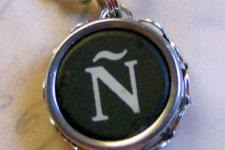What kind of Vocabulary should I Use while Teaching English Language Learners?

It is essential that you pay close attention to the way you speak while teaching English Language Learners (ELLs).
Here are some helpful tips:
Keep sentences short and to the point. Teachers like to talk and many of the words used may not be essential. Sentences like “If everyone could please just open their books […]
How do I Teach Reading Comprehension to ELLs?

One of the ways to teach reading comprehension to English Language Learners ELLs) is through the INSERT method. INSERT or Interactive Notation System for Effective Reading and Thinking) is a method that encourages students to read actively and make notations right in the text, or on post-it notes.
Notations are written using the following […]
Understanding the Language Experience Approach (LEA)

The Language Experience Approach (LEA) is a literacy development method that has long been used for early reading development with first language learners. It is also perfect for diverse classrooms. It combines all four language skills: listening, speaking, reading, and writing. Working on the four language skills side by side aids fluency.
An LEA […]
Strategies for ELL Students: Instructional Conversation

Over the years, a number of strategies for ELL students have been
developed. ELL or English Language Learners benefit from interactive
learning strategies. “Instructional Conversation” (IC) is one
such strategy.
IC is the hardest of The Center for Research on Education, Diversity & Excellence (CREDE) standards to implement as it involves releasing control over the talk in […]
Getting Started with English Language Learners

The first step in getting started with English Language Learners (ELLs) from diverse backgrounds is to create an environment of acceptance so that all students feel welcome, empowered, and ready to learn. Some of the small things that educators do to reach out to students who are ELLs can make a big difference […]
Teacher Tip on Spanish Names

Now that you’re able to pronounce students’ names in Spanish, following is a note about the culture.
In Latin America and Spain everyone has two last names. One is paternal and the other is maternal. The last name of the father is first and the last name of the mother is second.
Many teachers make […]
Tip for Teachers of ELLs: Parent Survey
The following information can help teachers of English Language Learners (ELLs) prepare appropriate instruction for their students and across their classrooms. Prepare a one-page parent survey in order to collect background information about each ELL. Some good things to ask about include:
Age of child on arrival to United States
Date of arrival
Circumstances […]
Teaching Tip: Pronouncing Spanish Names
Imagine the first day of class and being able to pronounce all of your student’s names with confidence. In this section, we’ll examine the Spanish alphabet (el alfabeto or el abecedario) by focusing on pronunciation of the sounds made by each letter. It is recommended to practice repeating these sounds aloud several times. […]
Education History in the ELL Classroom
The educational backgrounds of English Language Learners (ELLs) can vary widely. Some have received good educations in their countries of origin, and this experience will help them succeed in their new schools. Some even have more advanced academic skills than many students in U.S. “gifted and talented” programs […]
Teaching Tip: The Spanish Alphabet

The Spanish alphabet once had 30 letters. In addition to the 26 letters of the English alphabet, Spanish also included the CH, LL, RR and the Ñ.
But, several years ago three of these letters were eliminated from the alphabet and today only the Ñ remains. The post-1994 Spanish alphabet is made […]



